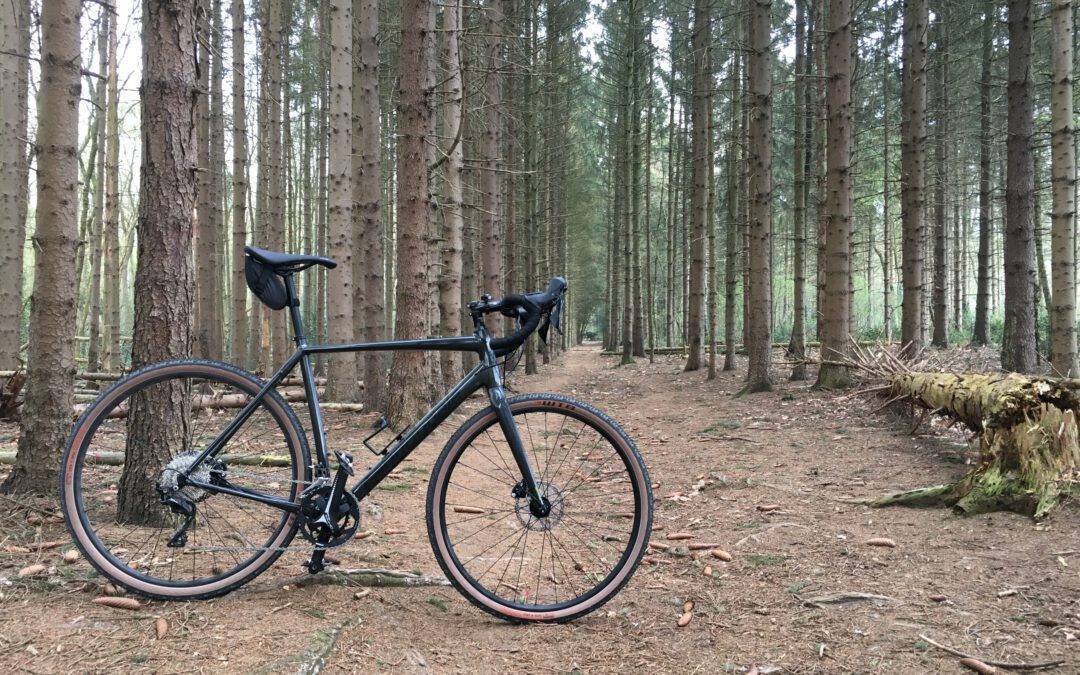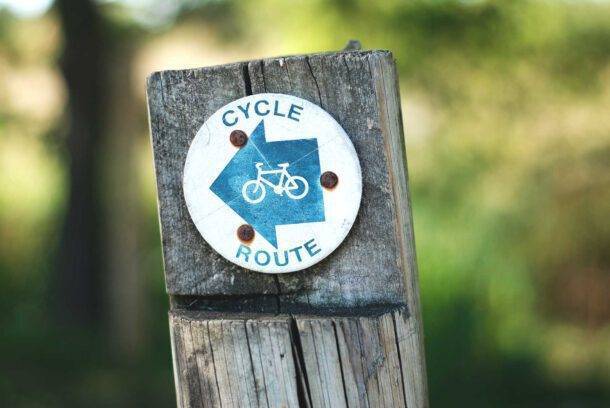Gravel Bikes. A Hype? A Marketing Spin-Off from the Cycling World?
You can label this beast however you want. One thing’s for sure—we’ve been excited about this versatile two-wheeler for quite some time. Thinking about taking up cycling but torn between a road bike and a mountain bike? Or maybe you’re looking for an extra bike and don’t want to spend a fortune? We’ll walk you through the benefits of a gravel bike and show you that it’s absolutely possible to ride a true all-rounder for under two thousand euros: Gravel On!
Sporty cycling is on the rise—now more than ever. And the timing couldn’t be better for this newcomer to the cycling market: the gravel bike is booming! Imported from the US and once available from only a handful of brands a few years ago, the gravel grinder (or gravel racer) is now being offered by virtually every bike manufacturer. The options are endless. But what exactly is gravel riding? And how is this peculiar bike different from a road bike or mountain bike? Time to answer some questions. Let’s dive into the world of gravel!
What is Gravel Riding?
Gravel riding basically means cycling on a variety of surfaces—both paved and unpaved—on a kind of road bike with wider tires. That’s pretty much the definition. Shell paths, forest trails, dirt roads, or rural farm tracks all fall under the gravel category. Connect these unpaved routes with asphalt stretches, and you’ve got the full adventurous character of gravel riding.
Multi-Purpose
But can’t I do all that on a mountain bike too? Kind of. But a gravel bike strikes a balance between stability, comfort, and grip. You sit more upright than on a road bike, but not as upright as on a mountain bike. Road bike geometry is built for speed and long rides on tarmac, while mountain bikes are all about short bursts and maneuverability off-road. The gravel bike? It’s a bit of both—the best of two worlds. Perfect for commuting, winter riding, or just as a versatile extra bike. Add mounting points for fenders, racks, and extra bottle cages, and you’ll wonder why you’d need any other bike.
Tires for Every Terrain
Wherever you want to ride with your gravel bike, there are tires to match. Most wheelsets fitted to gravel bikes can accommodate a range of tire widths and tread patterns. Gravel bike tires typically range from 28mm to as wide as 50mm. Depending on your chosen terrain, you can go from a slick tread to chunky knobs. Hit the forest and gravel tracks or turn your gravel bike into a road bike with a simple tire swap—you’ll quite literally gain ground. Talk about versatility!
Weight
Every advantage comes with a trade-off. To achieve stability and comfort, gravel bikes have a longer wheelbase than road bikes. This does come at the cost of added weight. Gravel bikes also usually come equipped with disc brakes for optimal, reliable performance. Disc brakes are heavier than rim brakes, but you definitely want them when riding rough terrain. If you’re the kind of rider who, like Michael Rasmussen, would file off bolts from your race bike to save weight, you might want to go for a (more expensive) carbon gravel bike. But the difference from aluminum is usually just one to two kilos.
Comfort
Is that the only downside? We’ve found one more: if the terrain gets really technical with large rocks, you’d be better off on a mountain bike. In those conditions, the gravel bike feels a bit clunky, lacks agility, and you’ll miss the front suspension. The American brand Cannondale has an answer for this with the Cannondale Lefty—a gravel bike with a single-sided suspension fork on a carbon frame. Be ready to open your wallet for that one. Most of the comfort on aluminum gravel bikes comes from tire pressure anyway.
Key Features of a Gravel Bike
- A compromise between stability, comfort, and grip on both paved and unpaved roads
- Geometry that prioritizes versatility over weight savings; frames are made from carbon, aluminum, or steel
- Disc brakes (hydraulic or semi-hydraulic) for reliable stopping power
- Tires suited for all surfaces, ranging from 28mm to 50mm wide
- Multi-functional: suitable for everyday use in all conditions
- Mounting points on the frame and fork for fenders, racks, and extra bottle cages
Affordable Gravel Bikes
So which gravel bike do you actually need? Below, we’ve listed a few options under two thousand euros. You won’t find carbon gravel bikes in this price range, so we’re sticking to aluminum models based on our own positive experiences. Want to go old-school? Then ride a steel frame!
Weight doesn’t matter that much with a gravel bike. You’ll mostly be riding off-road, possibly with bags, and in the end, it’s your legs that do the work. But hey, you can always opt for pedal assist…
One thing’s certain: Once You Go Gravel, Adventure Is Around Every Corner.





